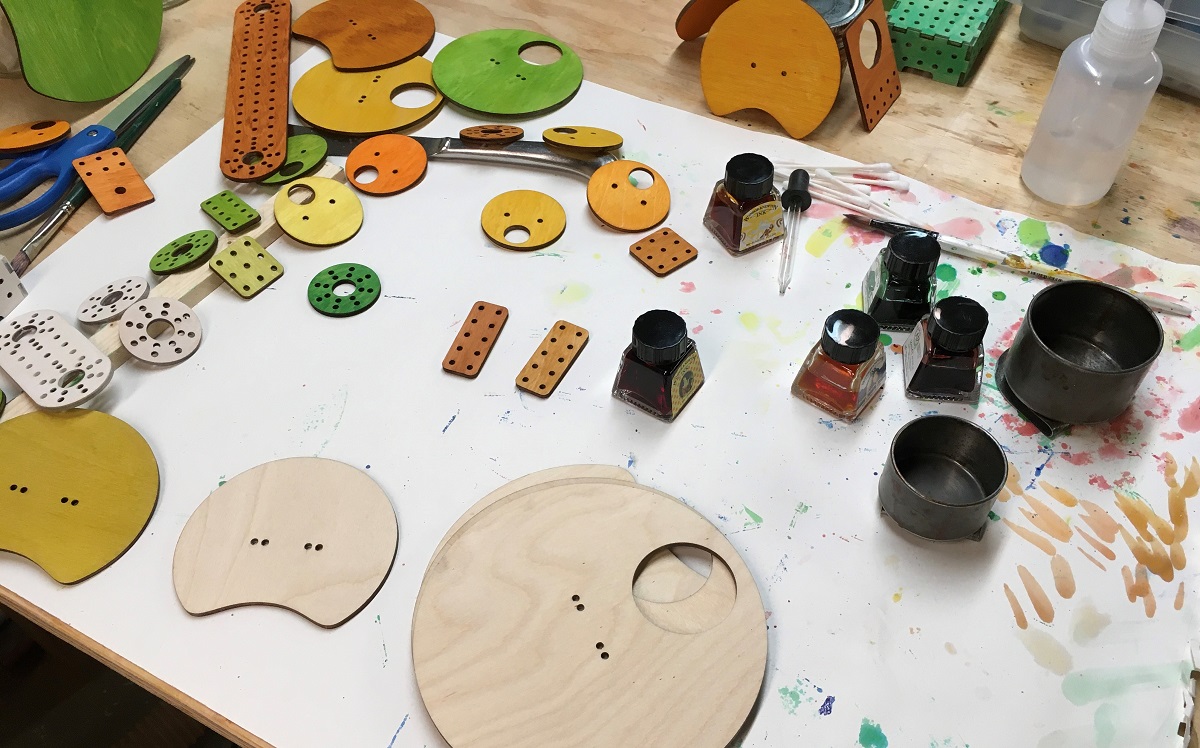Kendrick is a collaborative, semi-autonomous instrument for music interaction. You don't play on Kendrick, you play with Kendrick.
Kendrick acts as an intermediary between a human performer and an instrument with MIDI input. The work consists of a table-top interface with oversized knobs to accommodate the physical play-space of a human performer and their arm movements. There are typically three entities at play in this collaboration: the human performer, Kendrick, and the instrument Kendrick is controlling. The human can turn the knobs, but Kendrick is in control of what to play and when.

The layout of the interface is a nod to existing horizontal interfaces like a DJ’s turn-table or a pedal steel guitar. The interface was designed to be intuitive enough to feel natural, yet to be complex and specific enough to be a good instrument. The novel interface may be somewhat arbitrary, but the choices are connected to the internal functionality, the software that powers Kendrick, that is designed around the structure of music theory.
There are four inputs that can be adjusted by the performer: beat subdivision, scale type, tonic root, and scale position. By moving these four inputs, Kendrick’s internal state is tuned to create the potential for a particular kind of feeling. However, the human performer will need to listen to Kendrick’s internal rhythm and learn to collaborate if they hope to make something that sounds musical.
Kendrick is a meta-instrument. As indicated above, Kendrick must also be provided with a voice. Situated between the human performer and the voiced instrument, and unable to produce sounds on its own, Kendrick is an interpreter, a translator, a true collaborator.
Made with...
Kendrick acts as an intermediary between a human performer and an instrument with MIDI input. The work consists of a table-top interface with oversized knobs to accommodate the physical play-space of a human performer and their arm movements. There are typically three entities at play in this collaboration: the human performer, Kendrick, and the instrument Kendrick is controlling. The human can turn the knobs, but Kendrick is in control of what to play and when.
@andrewfrueh Grinding the blues scale on my custom midi instrument #newmediaart #powderoflife #makersmovement #performanceart #midi #music ♬ original sound - andrewfrueh
The layout of the interface is a nod to existing horizontal interfaces like a DJ’s turn-table or a pedal steel guitar. The interface was designed to be intuitive enough to feel natural, yet to be complex and specific enough to be a good instrument. The novel interface may be somewhat arbitrary, but the choices are connected to the internal functionality, the software that powers Kendrick, that is designed around the structure of music theory.
There are four inputs that can be adjusted by the performer: beat subdivision, scale type, tonic root, and scale position. By moving these four inputs, Kendrick’s internal state is tuned to create the potential for a particular kind of feeling. However, the human performer will need to listen to Kendrick’s internal rhythm and learn to collaborate if they hope to make something that sounds musical.
Kendrick is a meta-instrument. As indicated above, Kendrick must also be provided with a voice. Situated between the human performer and the voiced instrument, and unable to produce sounds on its own, Kendrick is an interpreter, a translator, a true collaborator.

Made with...






